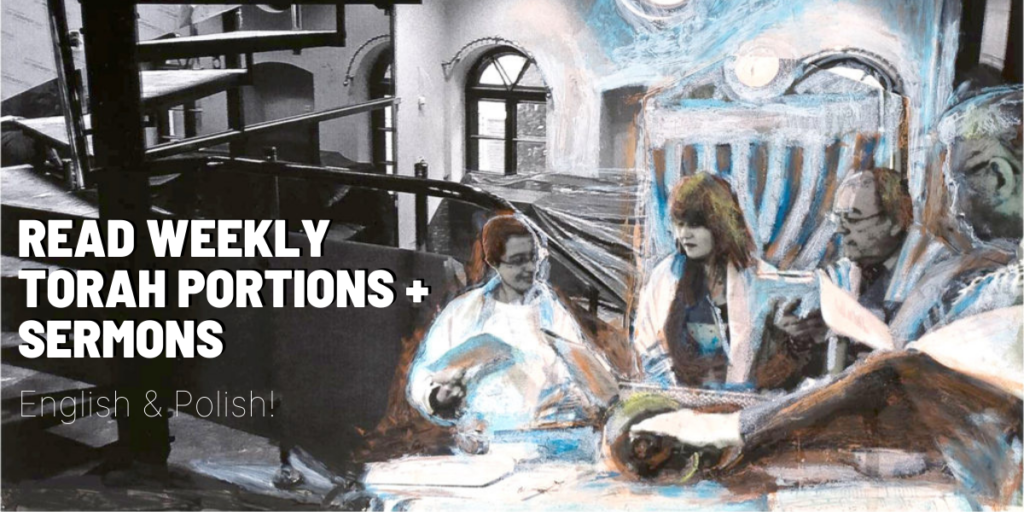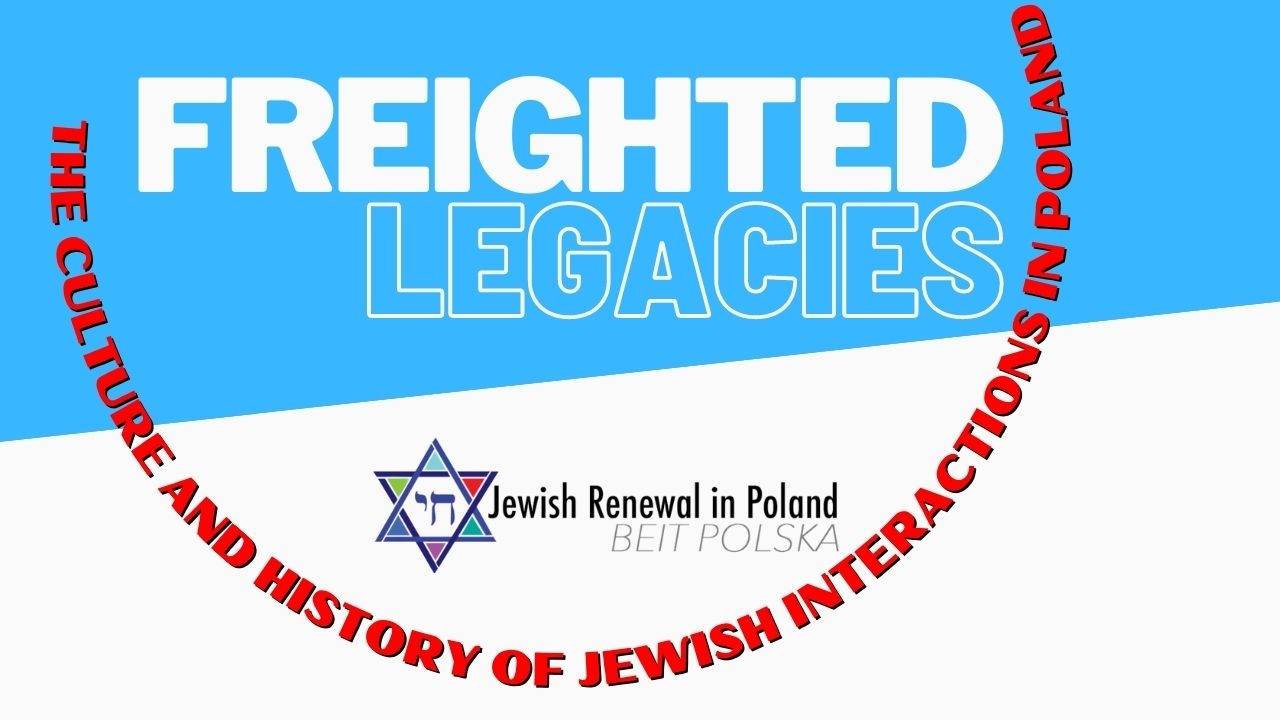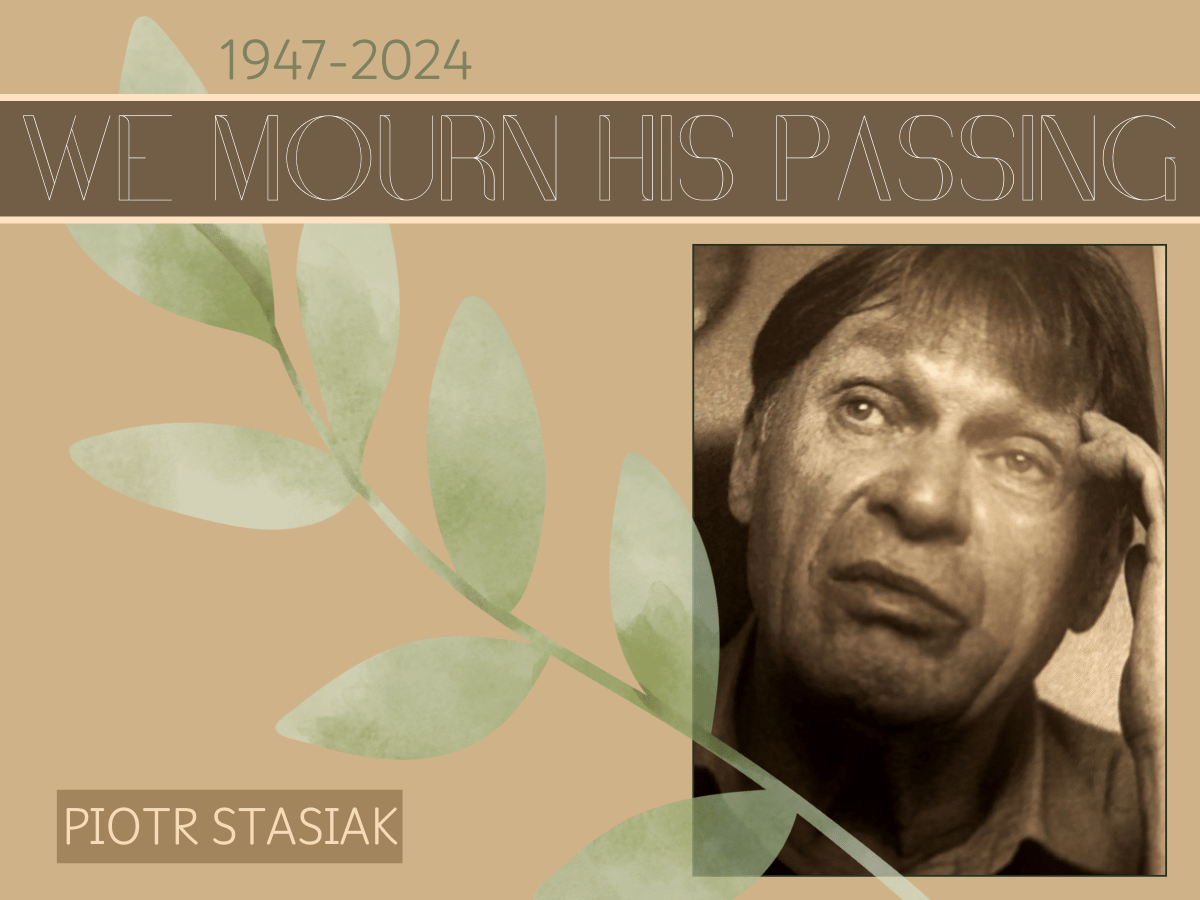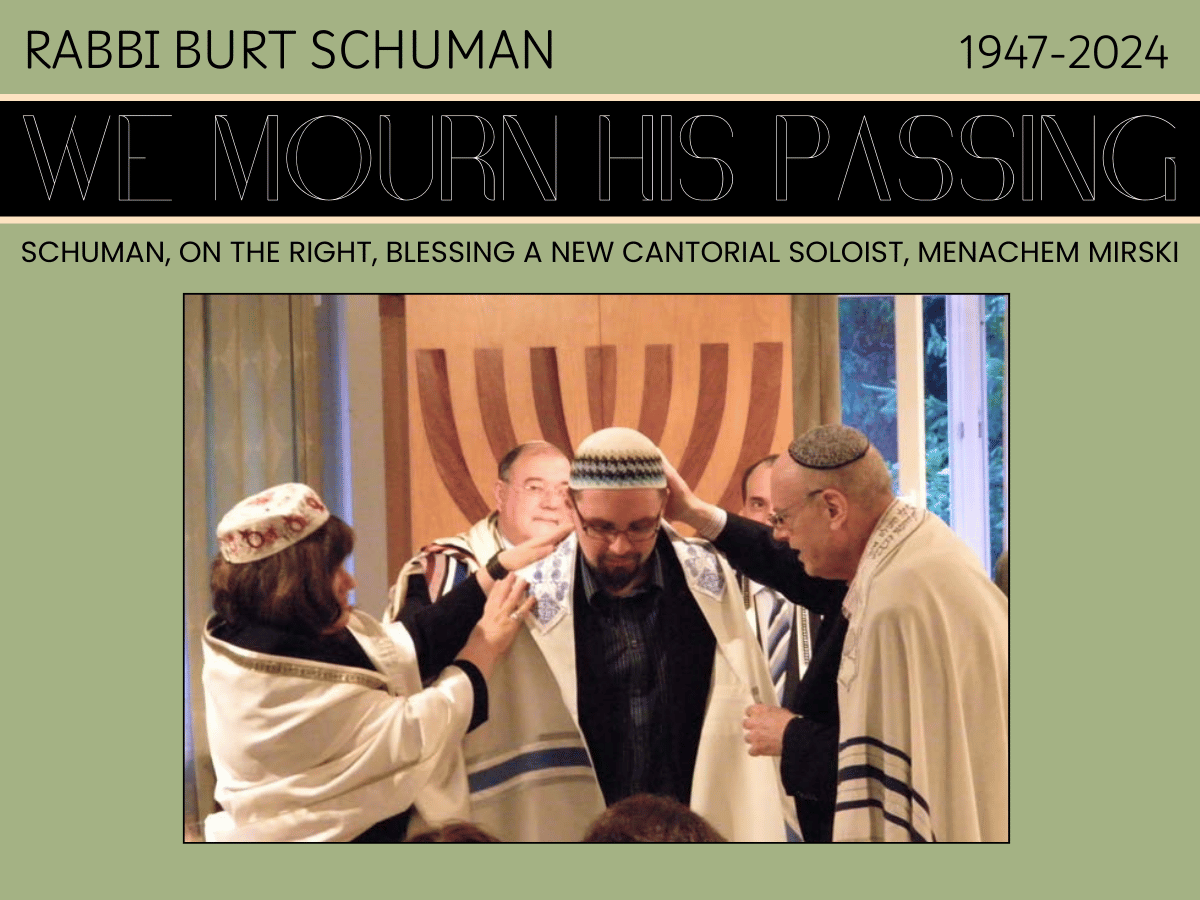
Rabbi Mati Kirschenbaum
[maxbutton id=”6″ url=”https://polishjewsreviving.org/czas-przyjrzec-sie-ofiarom/” ] The revelation at Sinai has already taken place, the construction of the Tent of Assembly has just come to an end. The Book of Leviticus begins at a time when the theological and material foundations of the religion professed before the newly liberated Israelites from Egypt had just been laid. Therefore, the parshah we are reading this week, Vayikra, the first and title paragraph of the Book of Leviticus (Vayikra), can focus on describing the various rituals that express the complex relationship of the People of Israel with the Eternal One. The primary vehicle for the Israelites to communicate with the Eternal is the institution of sacrifices, which is the focus of today’s parshah.
Parsha Vayikra gives us extremely precise instructions on how sacrifices should be offered. For centuries, Jews read this Torah passage in order to be sure of what, when and how sacrifices should be offered to the Eternal One. The way this parshah was read changed dramatically after the destruction of the second Jerusalem Temple. The Sages quickly realised that the description of the sacrifices had no practical use from then on; in order to preserve its meaning, Rabbinic Judaism began to interpret the Temple rituals in a spiritual way. The Book of Leviticus ceased to be an instruction and became a source of inspiration.
The change in approach to the Book of Leviticus brought new, previously unasked questions. Over the years, our tradition has devoted more and more space to considering not the ways of offering sacrifices, but the ethical considerations that condition their offering. Modern Progressive Judaism continues this tradition. Of particular interest to us is not so much the ceremony of offering sacrifices, but the moral expectations of the Eternal One toward us expressed by this ritual. Unfortunately, the Torah does not give us a clear answer about them. Therefore, we try to deduce them by analyzing the sacrificial system as a whole.
Parsha Vayikra describes a wide range of offerings made to the Eternal One. Today, I would like to take a closer look at the propitiatory offerings described in Chapter Four, which are offered in order to obtain the forgiveness of the Eternal for transgressions resulting from a lack of awareness of the wrong done.
The Book of Leviticus describes the persons required to offer them as follows:
[perfectpullquote align=”full” bordertop=”false” cite=”” link=”” color=”” class=”” size=””]And if the entire community of Israel sins due to lack of consciousness, and this fact is hidden from the eyes of the congregation, namely that they did something contrary to the commandments of the Eternal, and thus they are at fault, and then the sin they committed comes to light, in that case the congregation shall bring before the Tent of Meeting a young calf as an atoning sacrifice. The elders of the community shall place their hands on the head of the calf before the Eternal, and that calf shall be slain before the Eternal. (Leviticus 4:13-15)[/perfectpullquote]
[perfectpullquote align=”full” bordertop=”false” cite=”” link=”” color=”” class=”” size=””]If a leader sins and, due to lack of consciousness, transgresses one of the commandments of the Eternal One, his God, and thus fails, and if his attention is drawn to his sin which he has committed, he will bring in the gift of a goat without blemish. Then he will put his hand on the head of the goat, which will be killed in the place where burnt offerings are killed before the Eternal. This is the propitiatory sacrifice. (Leviticus 4:23-24)[/perfectpullquote]
[perfectpullquote align=”full” bordertop=”false” cite=”” link=”” color=”” class=”” size=””]If a man from among the people of the land sins inadvertently, transgresses one of the commandments of the Eternal, and thus fails, and if his attention is drawn to his sin which he has committed, he shall bring as a gift for his sin a goat without blemish. He shall then lay his hand on the head of the atoning sacrifice and kill it in the place of the burnt offering. (Leviticus 4:27-29)[/perfectpullquote]
The Book of Leviticus assumes that culpability through lack of awareness of the evil being done can be done by both the community and the individual. The problem affects everyone, from the powerful to the little ones. According to Her provisions, the Eternal One expects us to take action to redeem such transgressions.
According to the Book of Vayikra, the process of redeeming wrongs caused by negligence resulting from unawareness of the wrong committed began with drawing the culprits’ attention to the wrongfulness of their conduct. Next, the culprits had to bring an atoning sacrifice to the Tent of Assembly. Finally, this offering was offered to the Eternal in a public ceremony. Cleansing the culprits of their wrongdoings thus required openness to criticism, the courage necessary to admit guilt and a willingness to take corrective action.
At the same time, the process of redeeming wrongs was extremely egalitarian; the only thing that distinguished the powerful from the little ones in the process was the amount of the sacrifice made – the potentates paid more. Significantly, the entire community of the People of Israel was also subject to the process. Its repentance required the most costly sacrifice – a bullock, not a goat. It is impossible not to associate this sacrifice with the story of the golden calf we read recently.
I think that the existence of this collective atoning sacrifice was intended to deescalate the mistakes made by the community. The very awareness of its existence encouraged the Israelites to openly point out to their community the mistakes resulting from unconscious group misconduct. Thus, the ritual prevented a repetition of the sin of the golden calf.
The propitiatory sacrifices thus reminded the Israelites that their lack of awareness of the impropriety of their own conduct did not absolve them of responsibility. The process of offering them also recognized the role that informants of wrongdoing had in the moral renewal of their neighbours. Moreover, the public nature of the process ensured its transparency.
For several weeks, Polish public opinion has been preoccupied with Pope John Paul II’s approach to the sexual abuse of children by Catholic Church priests. The iconic role of the Polish pope in the Polish national consciousness has forced many politicians, public opinion leaders and historians to take a position on the allegations against him. Some Polish public opinion is convinced that the pope could not have acted differently under the given political circumstances. Others stress that at the time the institution of the Church was unaware that in the case of crimes of a sexual nature special care was due to the victims, not the perpetrators – the clergy.
The pope’s critics emphasize his long-standing awareness of the existence of sexual abuse in the Church; they accuse the pope of at best being passive about the problem, at worst participating in its active cover-up.
The discussion of this issue is fierce, as it is taking place in an election year. It can be expected to become part of the election campaign, losing the last chances for a balanced and substantive course.
The Book of Leviticus teaches us that sins of omission, resulting from a lack of the necessary emotional and intellectual recognition of an issue, affect both individuals and collectives. The Torah also teaches us that these sins should be openly debated and that the voices of those exposing the irregularities should be listened to with the utmost attention.
In conclusion, our parshah teaches us that every actor in social life – including clergy and religious institutions – can be subject to the criticism necessary to maintain a high level of social morality. I hope that the words of our parshah will inspire you to follow the public debate with the knowledge that it is not just about historical icons, but about the way we respond to the injustice of others. Shabbat Shalom!


















Leave a Reply